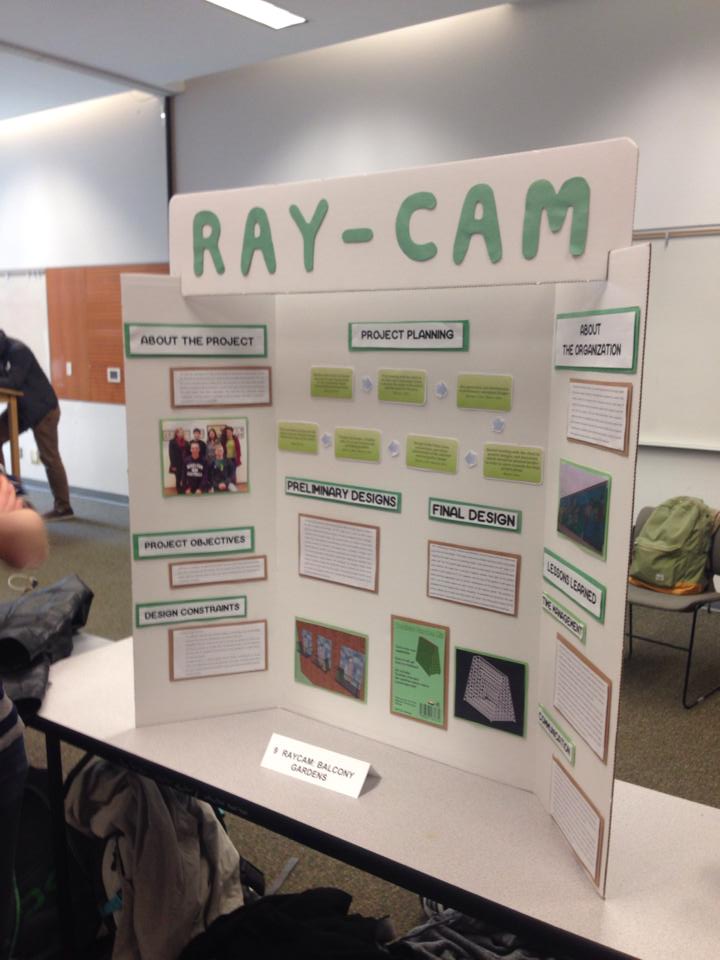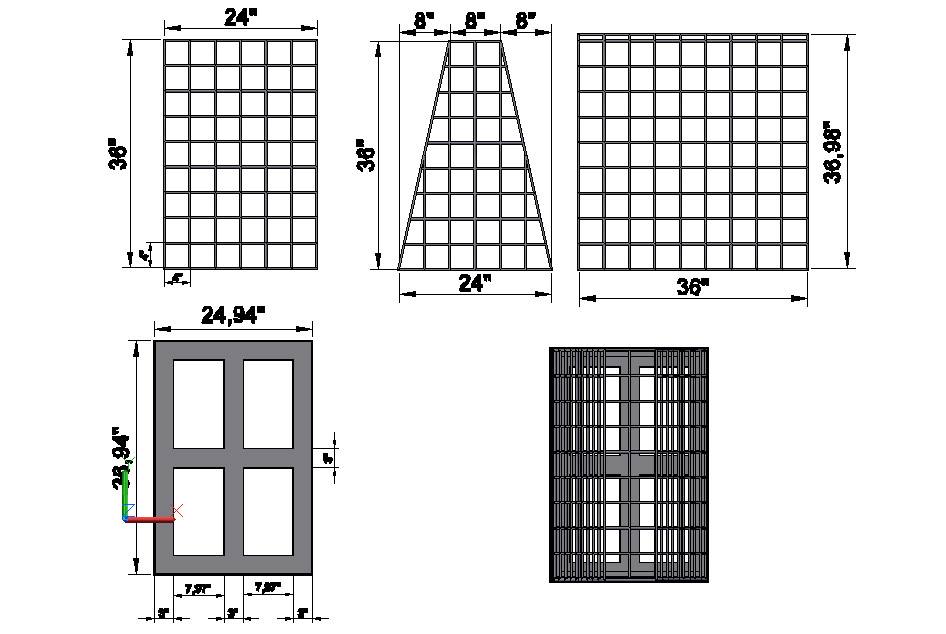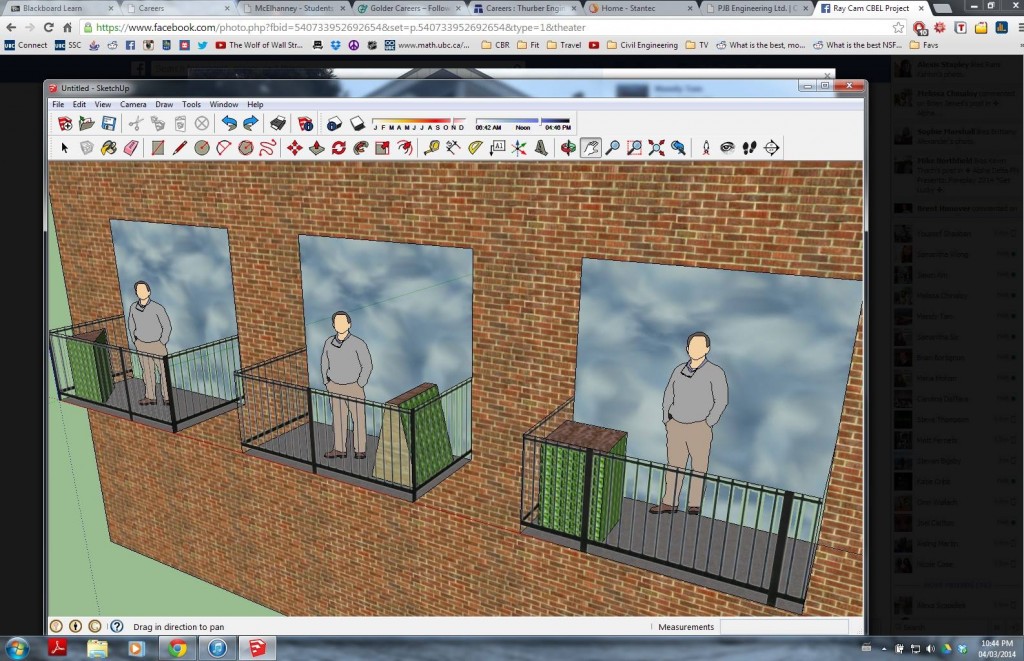We have now concluded our team’s involvement in Ray Cam’s Home Grown Wall project. Our team has provided Ray Cam with a vertical garden design which they can now use to manufacture gardens for their community. The gardens will allow families and individuals to grow their own vegetables which will save them money by allowing them to spend less on groceries. Also by allowing people to grow food locally, the Home Grown Wall project cuts greenhouse gas emissions that would result from having to transport food into Vancouver from other locations. Ray Cam also hopes to eventually expand the scope of the project so that the gardens will be available for the general public to purchase. The proceeds from these gardens would go to Ray Cam to help fund many of the projects run through their Community Centre.
Over the duration of the project, our team developed a greater understanding of project planning and implementation. At the early stages of the term, we had various ideas of how to progress with the design of the vertical gardens yet we were unable to implement any of these ideas because we had done very little planning beforehand. We quickly realized that if we were going to be able to complete the project on time we would need to begin scheduling our work and completing tasks in a specific order. We began holding weekly meetings in which we decided upon what tasks would need to be completed by the following week. By focusing on specific aspects of the project separately, we were able to focus our attention on details that may otherwise have been overlooked.
This CBEL project allowed each member of our team to learn how to work on a large-scale project within a team setting. Most of us had very little project-based experience at the beginning of the term which provided us with an opportunity to expand our skills and knowledge. Though we were presented with challenges throughout the project, we quickly were able to find solutions to these problems by addressing them to the whole team so that everyone could provide some input on how to solve them. Our team went through a maturation process as the project progressed and by the conclusion of the term, our entire team felt that we had developed new skillsets both as individuals and as a team. We hope now to take what we have learned through the Home Grown Wall project and to apply it to all aspects of our lives, both professionally and personally. This project was a great opportunity for us all and an experience that we will value for years to come.






